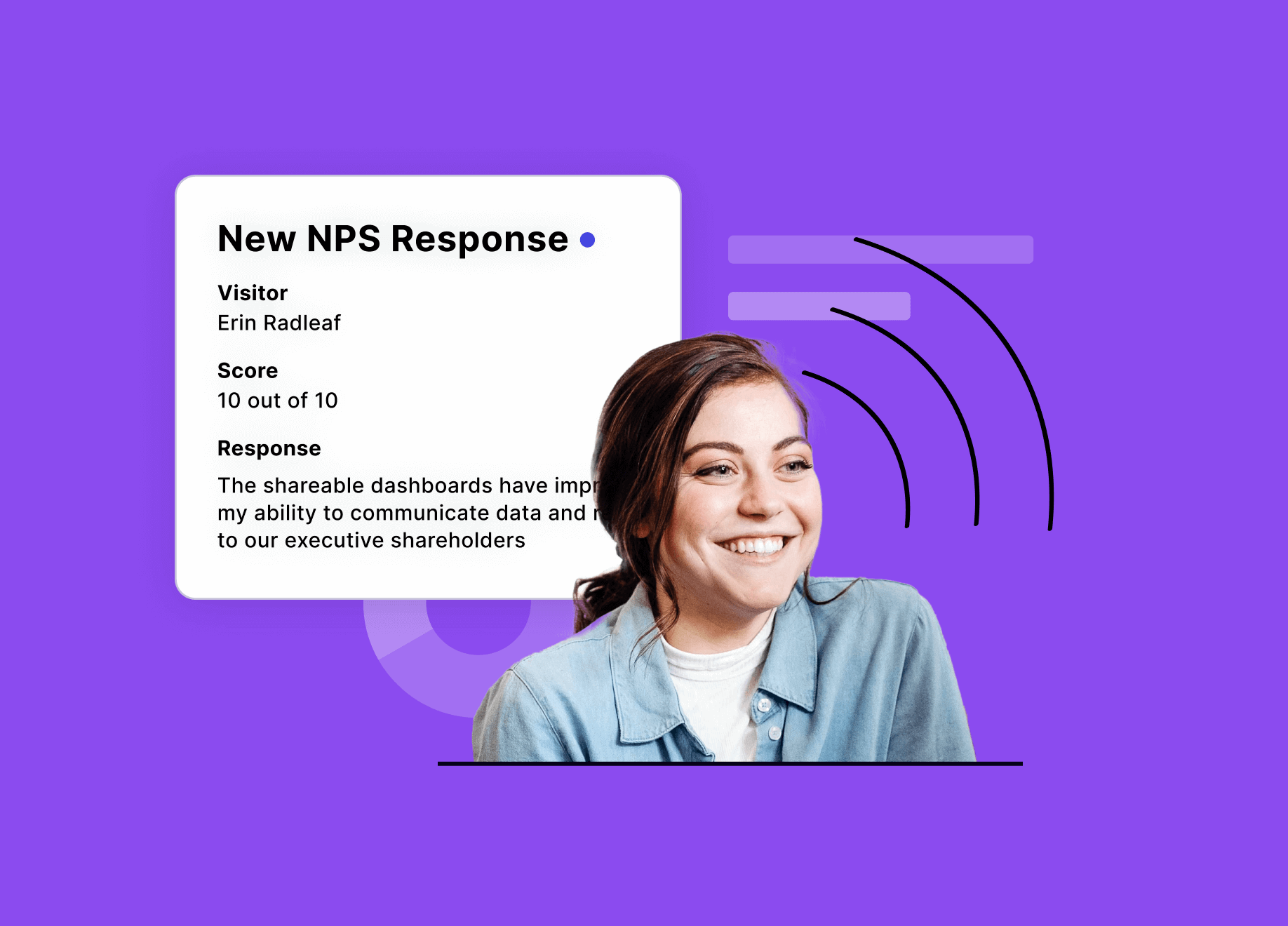
Voice of the Customer
A process for collecting customer feedback and then organizing and sharing it internally across the organization.
Last updated: March 28, 2024
Dive deeper
Table of Contents
What is Voice of the Customer (VoC)?
Voice of the Customer (VoC) is a process or program used by a business to collect and take action on customer feedback. VoC data focuses on customers’ experiences—with the goal of understanding their needs and expectations to further enhance or improve the product. VoC helps companies:
- Understand the why behind their customers’ feedback
- Identify what customers need and want, and what their pain points are
- Synthesize feedback and share it in a way that can inform the different areas of the business
Why is Voice of the Customer important?
Collecting customer feedback is the most reliable way to understand where a product is performing well, and where there are gaps stalling growth. But all too often, customer feedback gets lost in a black hole, amassed but not synthesized. Everyone in your organization may already be sold on the proposition that collecting feedback is incredibly important, but after the initial thrill of gathering responses from disparate polls, surveys, reviews, and interviews, the work of translating insight into action can fall flat. That’s where a VoC program comes in.
The real way to “reap the rewards of customer feedback,” is to invest in “an effective and complete system to measure the experience of the customer journey,” say McKinsey analysts. VoC is a way to operationalize what your customers say. Whether it’s feedback collected in the product, on sales calls, or through support channels, VoC is the system that companies use to distribute the feedback to all internal stakeholders.
What are the advantages of a Voice of the Customer program?
A VoC program helps you go beyond the what of user behavioral data to understand the why. Capturing feedback directly from the people who use your products and services every day provides valuable insight into their experiences, which would be hard for you to evaluate objectively as the expert of your own product.
VoC helps you build better product experience and customer experience. Customer feedback is often the genesis of new features, enhancements, or functionality—and a valuable input for your roadmap. It also saves your team time and resources. You won’t be left guessing what to build next or wondering which features will best meet your customers’ needs, because you’ll already have an idea of what your customers are looking for.
Having a VoC process in place also signals that you value your customers’ thoughts and consider their needs when building your product roadmap. This two-way engagement ultimately increases customer loyalty and improves their perceptions of your brand.
Finally, VoC is a powerful tool for driving organizational change. In the saturated world of Software-as-a-Service (SaaS) companies, where it’s easy for customers to switch vendors, experience is more important than ever. A VoC program is a great way to easily socialize customer feedback and encourage people throughout your organization to see their role in shaping the customer experience. A well-honed VoC program also helps operationalize customer sentiment by creating accountability mechanisms and establishing clear follow-through processes, so nothing gets lost in the black hole of feedback.
What are some examples of Voice of the Customer metrics?
There are many elements to a strong VoC program—including both active and passive feedback. If the concept of VoC is new to your organization, know that it’s okay to start small! Here are a few examples of VoC metrics to help you get started:
- Net Promoter Score (NPS): NPS is one of the most widely used measures of customer sentiment, asking users to rate how likely they are to recommend a brand to a friend or colleague from 0 to 10. This is a great metric to track over time, and can be a useful conversation starter for digging into individual customer feedback.
- Customer satisfaction score (CSAT): CSAT measures customer service and/or product quality, expressed as a percentage from 0 to 100. Like NPS, CSAT is a great quantitative measure to track over time, at regular intervals.
- Customer Effort Score (CES): CES measures how much effort a customer has to make in order to complete a task. CES is a good metric to cross-reference with other customer feedback data to build a complete picture of your customers’ experiences.
- Polls and surveys: Polls and surveys are a fantastic way to gauge sentiment across a large customer population. There are many ways to deploy them—including in-app, via email, over social media, etc. It’s important to think about when and how you field surveys so that they don’t feel intrusive or end up hurting your product experience.
- User interviews: Speaking to customers directly is an excellent way to build rapport and collect valuable verbatims. While it can be hard to conduct user interviews at scale (particularly for smaller VoC teams), they can be one of the most effective ways to gather deep qualitative experience insights.
To learn more about other ways to capture VoC data, check out this e-book on the building blocks of a successful VoC program.
How to build a Voice of the Customer program
- Set the vision: A VoC program aligns an entire organization around a maniacal focus on the customer. The first step is to welcome feedback at every turn. Make feedback collection a part of every team’s mandate, and make it exceedingly simple for customers to provide feedback in the product and beyond.
- Prioritize: Not all feedback is created equal, nor should it be treated as such. Just because a company embraces feedback, doesn’t mean its customer success managers have to react to every gripe or suggestion that comes their way. Choose a tool that helps the organization understand how common certain feedback is, how important it is to the customer, and how prepared the team is to act on it.
- Close the loop: Finally, successful VoC initiatives include a feedback loop that includes customers who have provided input to the brand. It acknowledges customers have been heard and conveys how the organization is planning to address their concerns.
Kajabi, for example, created a customer feedback portal inside their product where users could submit feature requests and vote on those submitted by others. Thousands of users engaged with the portal, and this feedback helped multiple teams across the organization better understand what their customers needed from the product.
You might also like

How Pendo Discover helps product design teams become more customer-centric

